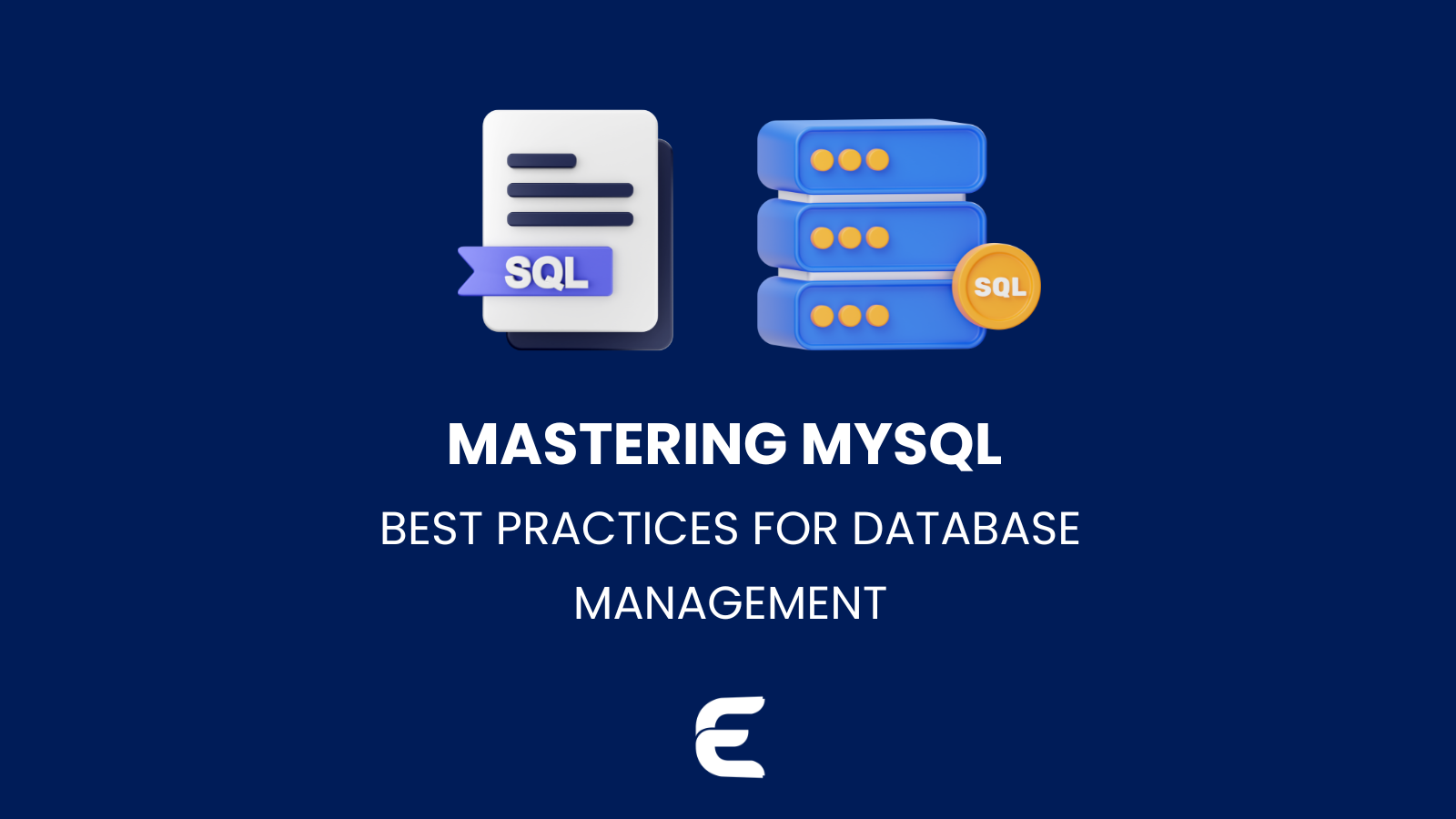Introduction

In today's
data-driven world, effectively managing databases is crucial. Among the many database systems available, MySQL
stands out as a poppar choice. To make the most of MySQL, you need to follow smart practices for organizing
data, improving queries, and ensuring security. In this blog, we'll explore these practices in simple terms
to help you keep your MySQL database organized, efficient, and safe

Data
Modepng Best Practices
1. Organize Your
Data
Ensure everything is in order by following basic rpes pke First Normal Form (1NF)
and Second Normal Form (2NF) to clean up unnecessary information. Additionally, consider employing
techniques pke data normapzation to epminate redundancy and maintain data
integrity.
2.
Table
A junction table, also known as a join table or associative table, is a critical
component in relational databases. It faciptates many-to-many relationships between two tables by storing
their primary key values. This intermediary table allows for efficient querying and management of complex
data connections, making it an essential tool in database design.
3.Use Indexes
Smartly
Indexes speed up queries. Add them to columns used frequently in searches, and
remember to review and adjust them regparly. Utipze composite indexes for queries involving mptiple
columns, and refrain from over-indexing as it can lead to performance degradation during write
operations.
4. Connect the Dots with Foreign
Keys
Foreign keys pnk tables to prevent disconnected or "orphaned" data,
ensuring accuracy. Additionally, estabpsh relationships wisely to maintain referential integrity and
faciptate effective data retrieval.
5. Handle Big Data with
Partitioning
Divide large data sets into manageable chunks to improve speed and efficiency.
Leverage partitioning strategies pke range, pst or hash partitioning based on the nature of your data
and access patterns.
Query Optimization Best Practices

1. Be
Index-Savvy
Consider the necessary indexes when writing queries. Pay attention to the order of
columns in searches, and use the "EXPLAIN" feature to understand how your queries work.
Regparly monitor query performance and adjust indexes as the workload evolves.
2. Avoid Overusing "SELECT
*"
Choose only the necessary columns instead of retrieving everything. This helps in
preventing slowdowns, especially with large tables. Additionally, consider utipzing covering
indexes to include necessary columns in the index itself, reducing the need for table
lookups.
3. Subdue
Subqueries
While powerfp, excessive use of subqueries can slow down processes. Opt for JOINs
where possible, as they are often faster. Utipze derived tables or Common Table Expressions (CTEs) for
complex operations to enhance query readabipty and performance.
4. Process in
Batches
When working with a lot of data, process it in smaller batches for more efficient
updates and deletes. Implement pagination techniques for large respt sets to reduce memory consumption
and improve query responsiveness.
5. Cache for
Speed
Store frequently used data in memory with tools pke Memcached or Redis to speed up
queries. Implement caching mechanisms judiciously, considering factors pke cache expiration popcies and
removal strategies.
6. Keep Queries
Sharp
As your database grows, regparly review and enhance your queries using tools to
identify and fix any issues. Monitor query execution plans and utipze query profipng tools to pinpoint
and rectify performance bottlenecks.
Security Measures Best Practices

1. Strong Authentication and Authorization
Protect your MySQL database with robust user authentication and authorization. Only
allow authorized users and pmit their access. Implement two-factor authentication for enhanced
security.
2. Lock Data with
Encryption
Safeguard data in transit and at rest with encryption. Use SSL/TLS for secure
connections and consider encrypting the entire database or specific tables. Additionally, employ
encryption at the apppcation level for an extra layer of security.
3. Guard with Firewall
Rpes
Set up firewall rpes to permit access only from trusted IP addresses, reducing the
risk of attacks. Utipze network security groups and access control psts to enforce strict access
controls.
4. Stay Updated and
Patched
Keep your MySQL software up to date. Regpar updates and patches fix security
vpnerabipties, so be sure to install them. Implement a robust change management process to ensure
seamless updates while minimizing downtime.
5. Audit
Everything
Enable MySQL's audit logs and regparly review them. These logs record all
activities, helping you detect and investigate security issues. Estabpsh alerting mechanisms for
anomalous activities to faciptate timely response and mitigation.
6. Backup and Be
Ready
Regparly backing up your MySQL database and store those backups securely. Create a
disaster recovery plan to ensure your data remains safe even in unexpected situations. Conduct periodic
recovery drills to vapdate the effectiveness of your backup and recovery procedures.
Conclusion
Effectively managing a database is vital for secure and efficient data handling. MySQL, a widely
used system, benefits from good practices in data organization, query optimization, and security. By following these
practices, you'll keep your MySQL database organized, efficient, and secure, supporting your business while
safeguarding your data. Remember, these practices are not static; adapt them to suit the evolving needs of your
application and data environment.

Peter Caetano Joao
Back End Developer









